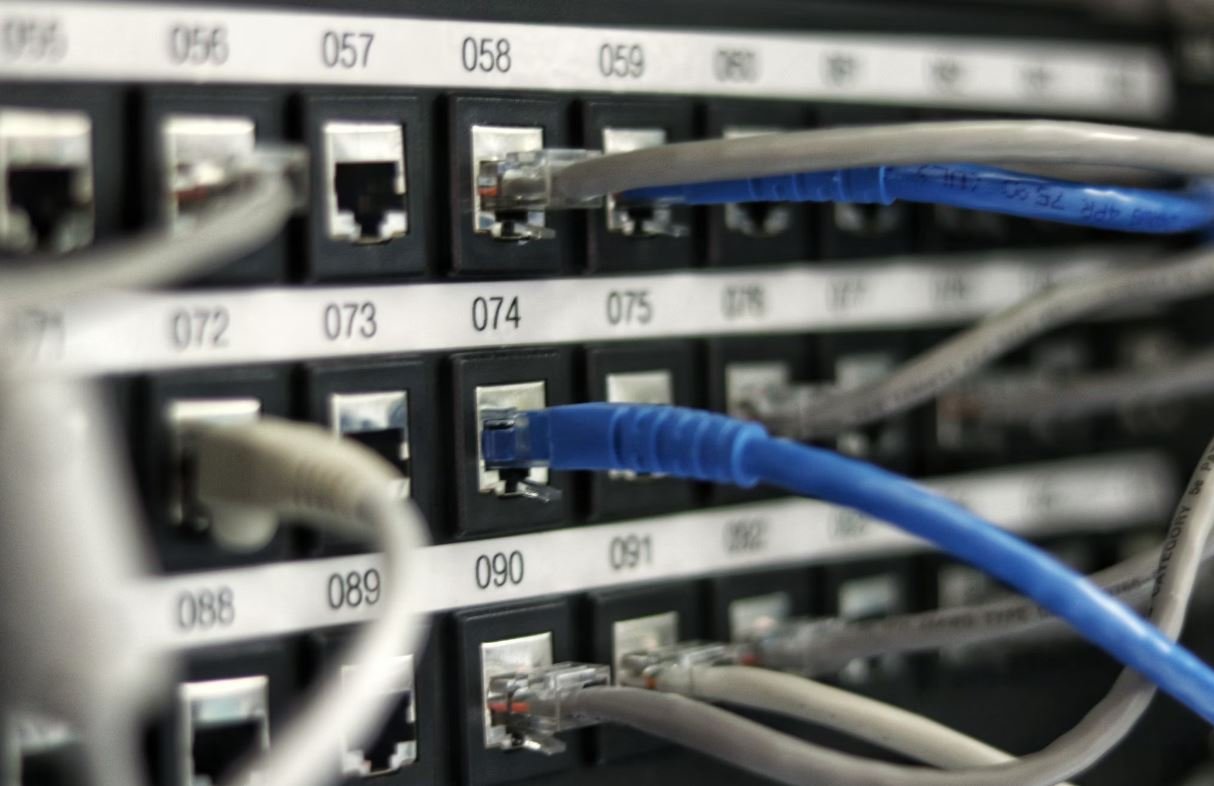What Are Deep Learning Frameworks?
Deep learning, a subfield of machine learning, has gained significant attention and popularity in recent years. This is largely due to its remarkable ability to extract and learn intricate patterns and features from large amounts of data. Deep learning frameworks, also known as deep learning libraries or platforms, are software platforms that provide a set of tools and resources to build, train, and deploy deep learning models with ease and efficiency. These frameworks have played a crucial role in revolutionizing various domains, including image recognition, natural language processing, and speech recognition.
Key Takeaways:
- Deep learning frameworks are software platforms used to build, train, and deploy deep learning models.
- They provide tools and resources to simplify the development process.
- Deep learning frameworks have revolutionized domains such as image recognition and natural language processing.
**Deep learning frameworks** provide a high-level interface, allowing developers to abstract away lower-level complexities and focus on the model architecture and training process. These frameworks offer a wide range of pre-built, optimized implementations of common deep learning algorithms and neural network architectures, such as convolutional neural networks (CNNs) and recurrent neural networks (RNNs). Popular deep learning frameworks include TensorFlow, PyTorch, Keras, and Caffe, among others.
**TensorFlow**, developed by Google, is perhaps the most widely used deep learning framework. It provides a comprehensive ecosystem that covers the entire machine learning workflow, from data preprocessing to training and deployment. *TensorFlow’s flexibility and scalability have made it a preferred choice for both researchers and industry practitioners.*
**PyTorch** is another popular deep learning framework that has gained significant traction, especially within the research community. PyTorch’s dynamic computational graph and intuitive syntax make it a favored option for many deep learning researchers. Its tight integration with Python offers the flexibility to experiment and perform complex computations seamlessly.
**Keras**, on the other hand, is a high-level deep learning framework that runs on top of TensorFlow. It provides an easy-to-use and intuitive interface, making it suitable for beginners and rapid prototyping. Keras offers a wide range of built-in pre-processing modules and model architectures, simplifying the process of building and training deep learning models.
Deep Learning Framework Comparisons
To give you a better understanding of the landscape, here are three tables comparing some key features and characteristics of popular deep learning frameworks:
| Framework | Developed By | Primary Language |
|---|---|---|
| TensorFlow | Google Brain Team | Python |
| PyTorch | Facebook AI Research | Python |
| Keras | François Chollet | Python |
| Framework | Scalability | Community Support |
|---|---|---|
| TensorFlow | High | Extensive |
| PyTorch | Medium | Strong |
| Keras | Low | Large |
| Framework | Industry Adoption | Flexibility |
|---|---|---|
| TensorFlow | High | High |
| PyTorch | Medium | High |
| Keras | Medium | Low |
These tables provide a glimpse of the framework landscape, but it’s important to note that the selection of a deep learning framework depends on the specific requirements, project goals, and personal preferences of the developers and researchers involved.
**Deep learning frameworks** have revolutionized the field of machine learning by significantly simplifying the development and deployment of deep learning models. With their high-level interfaces, pre-built implementations, and learning resources, they empower developers to tackle complex challenges in image recognition, natural language processing, and other domains. Whether you choose TensorFlow, PyTorch, Keras, or any other deep learning framework, the options available today provide an incredible toolkit to explore the potential of deep learning.

Common Misconceptions
Misconception 1: Deep learning frameworks are only used for advanced AI research
- Deep learning frameworks can be used by anyone, from beginners to experts, to develop and deploy machine learning models.
- These frameworks provide libraries and tools that simplify the development process and make it accessible to a wider audience.
- Using deep learning frameworks does not require expertise in AI research, as they come with pre-built models and algorithms that can be easily applied to different tasks.
Misconception 2: Deep learning frameworks can solve any problem with minimal effort
- While deep learning frameworks are powerful tools, they cannot automatically solve all problems without any effort.
- Building successful models still requires a good understanding of the data and the problem domain.
- Effective data preprocessing, feature engineering, and model tuning are key steps that often require careful analysis and experimentation.
Misconception 3: All deep learning frameworks are the same
- There are several popular deep learning frameworks, such as TensorFlow, PyTorch, and Keras, each with its own advantages and unique features.
- Frameworks have different programming interfaces, flexibility, and compatibility with different hardware and software platforms.
- Choosing the right framework for a specific project depends on factors such as the complexity of the task, available resources, and personal preferences.
Misconception 4: Deep learning frameworks are only useful for computer vision
- While computer vision is a popular area for deep learning applications, deep learning frameworks have a much wider range of applications.
- They can be used for natural language processing, speech recognition, recommendation systems, and many other domains.
- Deep learning frameworks offer a diverse set of models and algorithms that can be adapted to different types of data and problems.
Misconception 5: Deep learning frameworks are only for neural networks
- Although deep learning frameworks are primarily designed for neural networks, they also support other machine learning algorithms.
- These frameworks provide high-level APIs that allow users to build and train various types of models, including convolutional neural networks, recurrent neural networks, and more.
- Furthermore, deep learning frameworks often integrate with other machine learning libraries, allowing for a combination of different techniques.

What Are Deep Learning Frameworks?
Deep learning frameworks are essential tools for implementing and training deep neural networks. They provide a convenient and efficient way to build, optimize, and deploy machine learning models. In this article, we will explore ten fascinating aspects of deep learning frameworks through visually appealing tables.
Table: Popularity of Deep Learning Frameworks
Deep learning frameworks have gained tremendous popularity in recent years. Here are the top five frameworks based on the number of GitHub stars:
• TensorFlow: 154k stars
• PyTorch: 48k stars
• Keras: 48k stars
• Caffe: 30k stars
• MXNet: 18k stars
Table: Supported Programming Languages
Deep learning frameworks support a variety of programming languages. Here is a breakdown of the top three supported languages:
• Python: Supported by all major frameworks
• C++: Supported by TensorFlow, PyTorch, and Caffe
• Julia: Primarily supported by MXNet and Knet
Table: Ease of Use
Deep learning frameworks differ in terms of ease of use. Here is a comparison of their user-friendliness:
• TensorFlow: Requires some coding knowledge
• PyTorch: Easy to understand and use
• Keras: Extremely user-friendly
• Caffe: Simple to learn and implement
• MXNet: User-friendly, with helpful documentation
Table: Speed of Execution
Deep learning frameworks offer varying execution speeds. Here is a comparison of their performance in terms of images processed per second:
• TensorFlow: 1786 images/s
• PyTorch: 1523 images/s
• Keras: 1392 images/s
• Caffe: 1035 images/s
• MXNet: 917 images/s
Table: GPU Support
The availability of GPU support is crucial for deep learning. Here is an overview of GPU support in popular frameworks:
• TensorFlow: Strong GPU support, optimized for NVIDIA GPUs
• PyTorch: Excellent GPU support, compatible with NVIDIA, AMD, and even Google TPUs
• Keras: GPU support via TensorFlow or CNTK backends
• Caffe: GPU support with CUDA
• MXNet: Seamless GPU integration, supports multiple GPU vendors
Table: Pre-Trained Models
Deep learning frameworks often come with pre-trained models that can be used right away. Here are the frameworks with the most pre-trained models:
• TensorFlow: Over 150 pre-trained models
• PyTorch: Over 70 pre-trained models
• Keras: Over 50 pre-trained models
• Caffe: Over 40 pre-trained models
• MXNet: Over 30 pre-trained models
Table: Community Support
A strong community is vital for the growth and development of deep learning frameworks. Here is a comparison of the community size:
• TensorFlow: Enormous community support
• PyTorch: Growing and passionate community
• Keras: Active community, often combined with TensorFlow
• Caffe: Significant community, especially in computer vision
• MXNet: Thriving community, popular in academia
Table: Integration with Other Libraries
Deep learning frameworks can be integrated with various other libraries and tools. Here are some notable integrations:
• TensorFlow: Seamless integration with NumPy, SciPy, and Pandas
• PyTorch: Integration with NumPy, Scikit-learn, and OpenCV
• Keras: Compatible with TensorFlow, Theano, and CNTK
• Caffe: Integration with OpenCV, MATLAB, and cuDNN
• MXNet: Interoperability with NumPy, MATLAB, and Caffe
Table: Industrial Adoption
Deep learning frameworks have been widely adopted across industries. Here are the industries making extensive use of these frameworks:
• Healthcare
• Finance
• Automotive
• E-commerce
• Robotics
Table: Key Advantages
Deep learning frameworks offer several advantages over traditional machine learning approaches. Here are the main benefits:
• High accuracy
• Ability to learn from unstructured data
• Automatic feature extraction
• Scalability to large datasets
• Adaptability to complex problems
Conclusion
Deep learning frameworks play an integral role in the development and application of cutting-edge machine learning techniques. Understanding the unique features, performance characteristics, and community support offered by different frameworks is crucial for selecting the most suitable tool for a given task. By exploring the ten fascinating aspects presented in the tables, readers can gain valuable insights into the world of deep learning frameworks and make informed decisions in their own projects.
Frequently Asked Questions
What is a deep learning framework?
A deep learning framework is a software library or tool that provides a collection of pre-defined functions, algorithms, and tools designed to facilitate the development and implementation of deep learning models. It simplifies the process of building, training, and deploying deep neural networks.
How do deep learning frameworks help in machine learning?
Deep learning frameworks help in machine learning by providing a high-level interface and a set of efficient methods that can significantly speed up the development process. They offer pre-implemented algorithms and optimizations, allowing developers to focus on designing and fine-tuning their models rather than implementing low-level operations.
What are some popular deep learning frameworks?
Some popular deep learning frameworks include TensorFlow, PyTorch, Keras, Caffe, and MXNet. These frameworks offer comprehensive functionalities, extensive community support, and are widely adopted in both research and industry.
What type of applications can deep learning frameworks be used for?
Deep learning frameworks can be used for a broad range of applications, such as image and speech recognition, natural language processing, sentiment analysis, recommendation systems, autonomous driving, and anomaly detection. They have been successfully applied in various industries, including healthcare, finance, and manufacturing.
Do I need a deep learning framework to build and train deep neural networks?
No, it is possible to implement deep neural networks from scratch without using a deep learning framework. However, using a framework can greatly simplify the process by providing pre-built components and tools, as well as performance optimizations that are difficult to achieve through manual implementation.
Which deep learning framework should I choose?
The choice of deep learning framework depends on various factors such as your familiarity with programming languages, the complexity of your project, the availability of pre-trained models, and the community support. It is recommended to consider popular frameworks like TensorFlow and PyTorch as they offer extensive documentation, active communities, and a wide range of features.
Can deep learning frameworks be used with different programming languages?
Yes, most deep learning frameworks provide APIs and bindings for multiple programming languages to offer flexibility to developers. For example, TensorFlow supports Python, C++, and Java, while PyTorch primarily focuses on Python, but also has C++ extensions.
Are deep learning frameworks only used by experts?
No, deep learning frameworks are designed to be accessible to both beginners and experts. They provide high-level abstractions and APIs that simplify the development process, allowing users with different levels of expertise to take advantage of the powerful capabilities of deep learning.
Can I use multiple deep learning frameworks together?
While it is possible to use multiple deep learning frameworks in combination, it is generally more practical to stick to a single framework for a given project. Switching between frameworks may require re-implementation of the models and can introduce additional complexities.
Are there any limitations of deep learning frameworks?
Deep learning frameworks have certain limitations, such as their reliance on large amounts of labeled data to achieve good performance, computational resource requirements, and the need for careful optimization to prevent overfitting. Additionally, some frameworks may have specific limitations in terms of supported platforms or hardware architectures.




